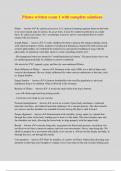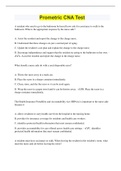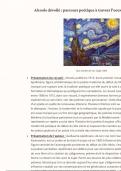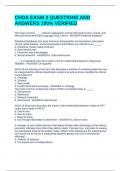Samenvatting
Oncology Summary (NWI-BM015C) - Radboud University
- Instelling
- Radboud Universiteit Nijmegen (RU)
Detailed summary of lectures 1-6 from the course Oncology. Lecture 7 is not included and the half of lecture 8 is summarized (which is the most important part).
[Meer zien]













